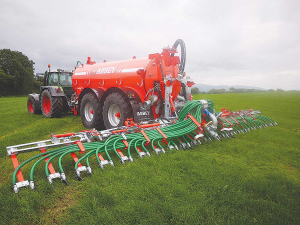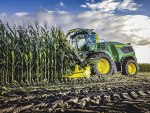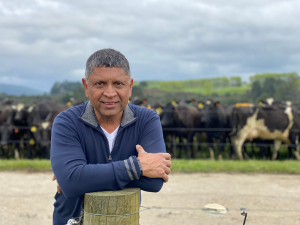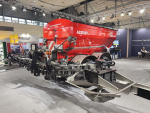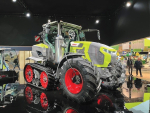Liquid manure is a natural source of nitrogen, potassium, phosphorus, organic matter and minerals.
Achieving even slurry application regardless of weather conditions, crop type and date is critical. Distributing the slurry below the crop canopy instead of on the crop foliage has significant benefits, including 91% reduction in smell and up to 90% improvement in nitrogen retention.
Cutting silage removes large quantities of potassium from paddocks, so applying slurry that contains large volumes of potassium makes good agronomic sense, alongside reducing the cost of inorganic fertiliser.
According to a 2020 Irish Teagasc study, trailing shoe and dribble bar applicators can reduce ammonia losses by 30% and 60% respectively. This is because the slurry is placed in bands directly onto the soil surface just below the grass. Other benefits include reducing sward contamination from slurry, so decreasing grazing return times compared to a traditional splash plate applicator and more nitrogen being retained by the grass sward.
Abbey Machinery’s recently introduced 10.7 metre wide applicators are available in Trailing Shoe or DM Band Spreader formats, with the wider application width. These are said to reduce the infield slurry spreading time by up to 35% compared to narrower applicators, with the associated benefit of less soil compaction.
The Abbey-built DM Bandspreader is chassis mounted, taking its slurry feed from the rear of the tanker. From here, a Vogelsang 42-hole distributor conveys slurry to outlets spaced at 250mm intervals across the boom.
The extended boom tips are hydraulic folding, which has the added benefit of a break-back system should they meet with paddock boundaries or immoveable objects – if the booms are positioned too close to field or paddock boundaries. Low overall heights have been made possible. Also, the 1.5m extensions result in an overall height for transport and a compact machine.
The 10.7m Trailing Shoe comes with the same Vogelsang 42-hole distributor and a 40mm hose system. The applicator follows the ground contours, while accurately placing nutrient in even lines at the base of the crop using steel wear points and rubber outlets.
www.farmgard.co.nz





